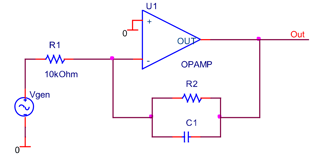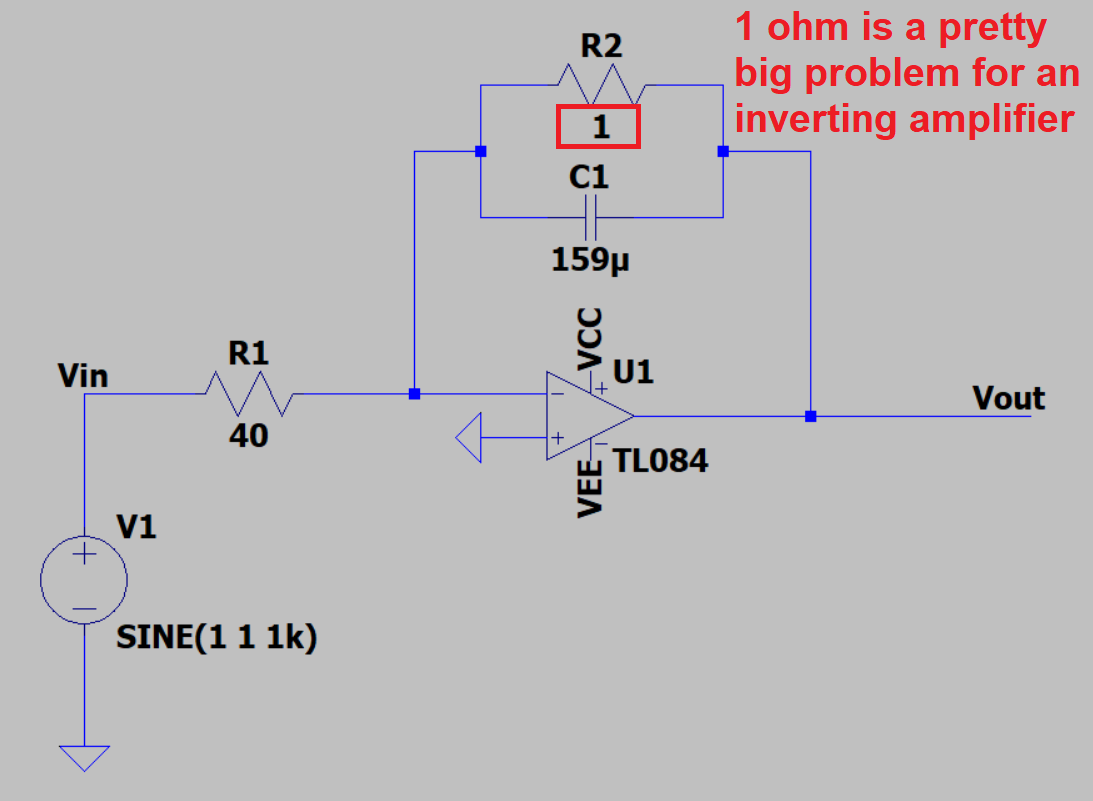Our teacher explained to us that this set up allows us to produce the effect of a low pass filter:
I have indeed found useful formulas to achieve this.
The problem however is that when I simulate this block on LTspice for a sinusoidal signal having a certain offset. The output voltage is not centered on this offset but on 0 V. Moreover the signal seems to saturate at 0 V whereas my op amp is powered between +15 and -15 V.
How to make sure to cut the frequency while remaining centered on the offset in order to tend towards the average of the basic sinusoidal signal?
For information, I have the same problem with a universal op amp and also if I use a square signal.
EDIT:
Here is what I get for R1=R2=10k and C1=15,9nF:
 And for R1=100k R2=10k C1=15,9n:
And for R1=100k R2=10k C1=15,9n:









